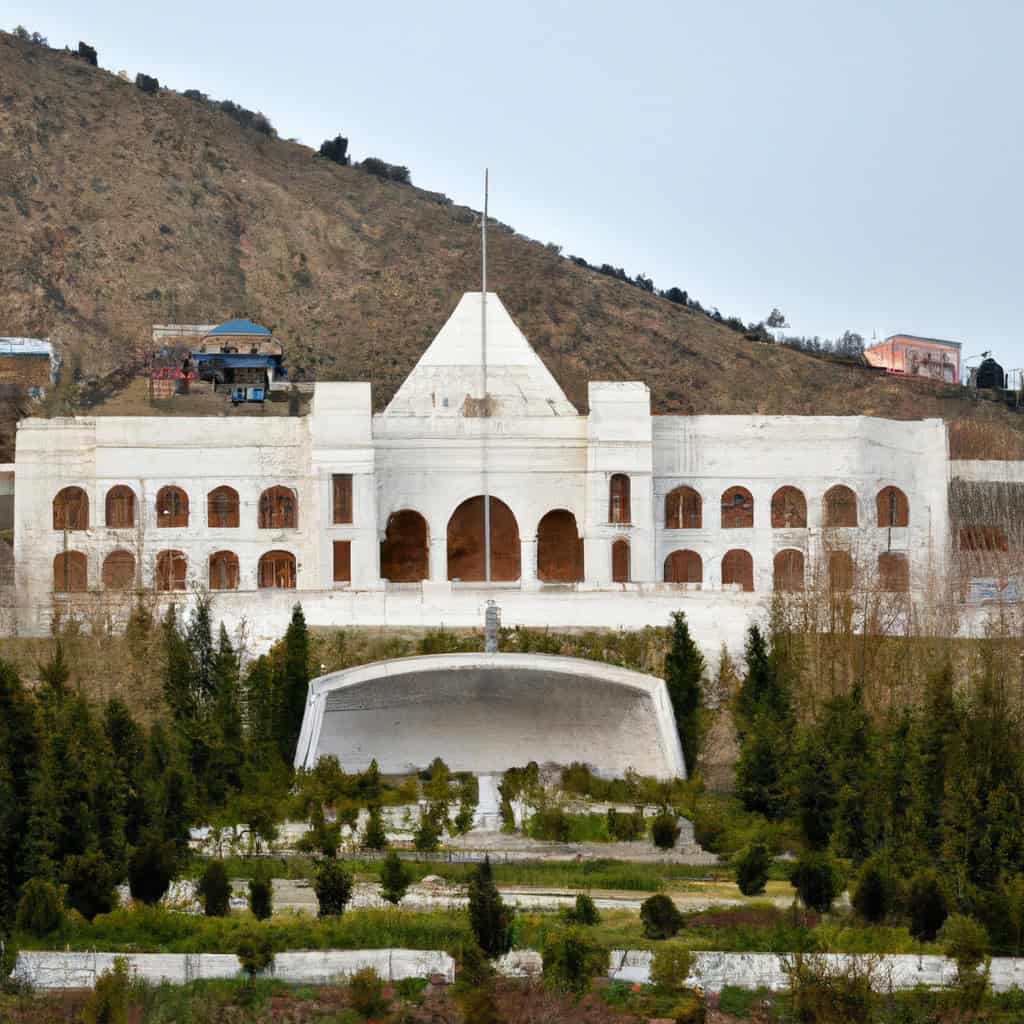Tajbeg Palace in Kabul, is one of many fascinating sites that both foreign visitors and local tourists can explore while they visit Afghanistan and exploring Kabul Province. Steeped in history and pulsating with cultural richness, Tajbeg Palace is indeed a visual spectacle. Its majestic structural design and its significance in Afghan history are testimonies to both the country’s resilience and its cultural wealth.
Tajbeg Palace stands on a hill near Kabul, etched with years of historic events and tales of times that are cardinal to the identity of present-day Afghanistan. Built in the early 20th century, it is a product of Afghanistan’s rich historical tapestry, offering an amalgamation of traditional and modern architectural styles. The palace voices the whispers of a major part of Afghanistan’s past, narrating an enduring tale etched in stone and marbled walls.
Tajbeg Palace Most Important Events
- The Palace Construction: Dating back to the early 1920s, the construction of Tajbeg Palace was a significant moment in Afghanistan’s architectural evolution. Combining western influences with traditional design elements, it stood as a symbol of modernisation.
- The Soviet Occupation: In the late 1970s, the palace was the stage for a major military operation by the Soviets. This historic episode had a profound effect on the fate of Tajbeg Palace and its country.
- Today’s Restoration: Despite suffering damage during critical periods in Afghan history, efforts are unbowed to restore and conserve the impressive structure, further consolidating the palace’s unparalleled importance to Afghanistan’s heritage.
History of Tajbeg Palace in Kabul
The Tajbeg Palace bears witness to a significant transformation in Afghan history. Its construction in the early 20th century marked a potent transition towards western influences and modernity under then ruler, Amanullah Khan. Meant to serve as a pivotal symbol of development, it has set a vibrant ambiance in place for the future of the nation.
However, the palace’s past wasn’t always bright. With the Soviet occupation at the end of the 1970s, the palace was reduced to a battleground. It witnessed a series of dramatic events, including the brutal assassination of President Hafizullah Amin. However, the palace stood resilient, surviving the turmoils and bearing the scars of those tumultuous times.
Today, the palace is under renovation, with plans to restore its original glory and elegance. Although years of conflict have left their mark, the palace’s grandeur is slowly being revived, and with it, the narratives of its numerous halls and rooms. The palace stands not just as a monument but a testament to Afghanistan’s past and its tireless journey towards restoration.
Why It’s Important to Afghan History
Tajbeg Palace narrates a vital chapter of Afghan history. Its walls recount the transformational era under Amanullah Khan, known for his progressive vision for the nation. The amalgamation of architectural styles encapsulates a glance into a changing world, reflecting Afghanistan’s acceptance of foreign influence and forward-thinking propensities.
Moreover, the palace’s importance is highlighted during the documented Soviet occupation, marking critical, albeit grim, moments in Afghanistan’s modern history. Despite the turmoil, the palace being an enduring symbol of resilience reflects Afghanistan’s tenacity and will to persevere through challenging times.
Why to Visit Tajbeg Palace
The Tajbeg Palace, resplendent with intricate designs and grand architectural elements, invites travellers to explore its hallways, each echoing a story of a bygone era. The scenic surroundings further enhance the appeal, making a visit to the palace an immersive experience into history and culture.
Inside the palace, the grandeur is unforgettable. The incredibly detailed architectural styles showcase the blending of cultures and time periods throughout Afghan history. The panoramas it offers of Kabul city are unmatched, providing a unifying melding of Afghanistan’s present and past.
- Marvel at the stunning fusion of architectural styles
- Gain insights into important historical events
- Experience breath-taking views of Kabul city
- Delve into Afghan culture and tradition
- Embark on a journey of historical exploration.
The palace is located on a hill near Kabul and is accessible through various means of transport. The best time to visit is during the mild spring or autumn months, when the weather is most favourable.
Cultural & Tourist Significance
The palace holds an invaluable position within Afghanistan’s cultural and tourism landscape. The narratives within the palace walls encompass a blend of traditions, historical events, and cultural realities that define Afghan identity. For locals, the palace is a beacon of national pride, standing testament to their rich cultural history.
For tourists, the palace is more than an architectural marvel. It is Afghanistan’s history personified in stone and mortar. Whether they are history enthusiasts, architecture lovers, or casual tourists, visitors will find Tajbeg Palace a captivating immersion into a world imbued with tales of kings, invasions, bravery, and cultural fusion.
Also, the palace’s potential for tourism is immense. Its strategic location overlooking Kabul presents a unique viewing experience, and the palace’s projected restoration already sparks anticipation among tourists. The palace is poised to form a better global understanding of Afghanistan’s deep-rooted culture and history as it steps into a new era of peace and prosperity.
Interesting Facts
Beyond its apparent grandeur and historical significance, the palace embodies intriguing lesser-known facts and anecdotes. The Tajbeg Palace, having been the setting for several important historical events, is believed to house secret passages and rooms, which remain a subject of intrigue and exploration.
According to local stories, the palace is said to be haunted by spirits. While this could merely be a folklore sentiment, it adds an element of thrill and mystery to a visit, enticing those who are drawn to such intrigues.
Lastly, the Tajbeg Palace has also caught the attention of the film industry. Its unique architecture and history have made it the backdrop of several films and documentaries. This exposure highlights not just the visual appeal of the palace, but also its value as a symbol of Afghan cultural heritage.

